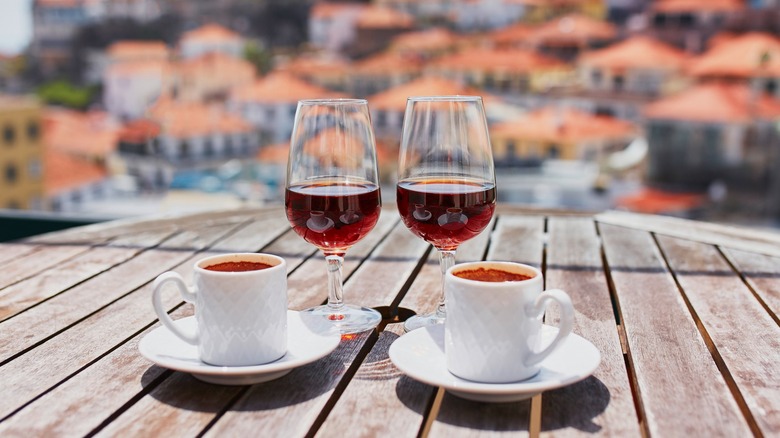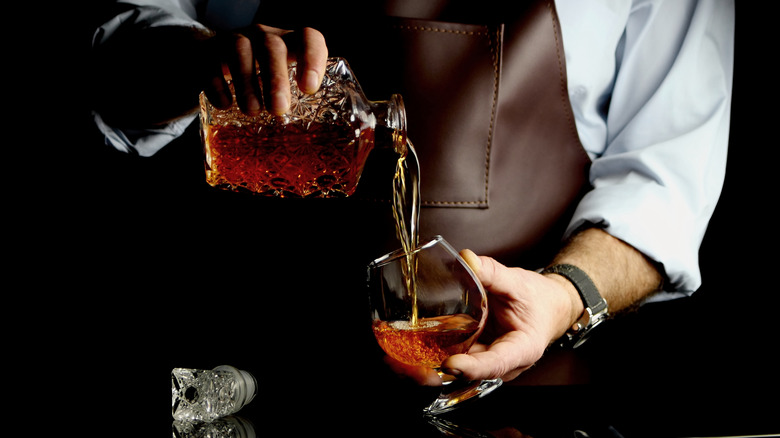How Brandy Plays A Role In Fortifying Madeira Wine
Madeira is the Hawaii of Europe, a tropical island off the coast of Morocco with stunning sheer cliffs jutting up against an impossibly blue ocean. And this little Portuguese island of only around 250,000 people isn't just known for its natural beauty. Madeira is also famous for its delicious foods and drinks. Madeira wine is in a class all its own – potent, darkly sweet, with hints of spice dancing around the periphery.
While you could also use these descriptors for other types of fortified wine, Madeira wine has been a highly sought-after luxury for centuries. For those of you who need a refresher on what fortified wine is, it's basically halfway between a wine and a liquor. The base wine is fortified by adding a grape spirit (usually brandy in the case of Madeira wine) which increases the alcohol content of the drink and creates a more viscous mouthfeel.
Fortified wines became popular as European empires expanded out to far-off places that required long sea voyages to get to. Whatever the boat was carrying to its destination was subjected to immense heat and constant agitation from the waves. Regular wine would be destroyed by such treatment before it arrived at its destination. But by fortifying the wine with brandy, the beverage could withstand the harsh treatment and, in the case of Madeira wine, actually benefited from it.
Brandy enhances Madeira wine without overpowering it
While the exact reason Madeira wine is made with brandy rather than some other grape spirit seems to be lost to history, it likely comes down to common practice. Other grape spirits that can be used to fortify wine include pisco, grappa, Cognac, and Armagnac, but brandy is certainly one of the most popular options in Europe for the job. There are dozens of types of brandy but they are all distilled wine.
Because brandy is essentially concentrated wine, when you add it to undistilled wine there isn't a huge gap between the flavor profiles of the two liquids. This means that the brandy folds in nicely with the rest of the wine, adding its own tasting notes without dominating the drink or bringing in flavors that are out of place. The timing of fortifying Madeira wine plays an important role in how it will taste. Brandy can be added in while the base wine is being fermented or it can be added after fermentation is complete.
Fermentation is the process where yeast turns sugar into alcohol. If you let fermentation run its course, the yeast will eat up as much sugar as it can until the alcohol becomes so concentrated that it is killed by it. If you add the brandy later in this process, the wine will be less sweet since there's less sugar. But if you partially ferment and then add the brandy in, the yeast will be killed before all the sugar is gone resulting in a sweeter Madeira wine.

